Physical Address
304 North Cardinal St.
Dorchester Center, MA 02124
![]() For videos accompanying this chapter see ExpertConsult.com . See inside cover for access details.
For videos accompanying this chapter see ExpertConsult.com . See inside cover for access details.
Cataracts, which are opacities of the crystalline lens, are an important problem in children worldwide. The incidence varies, but in the UK the adjusted cumulative incidence at age 1 year is 2.49/10,000, increasing to 3.46/10,000 by age 15 years. Bilateral cataracts are more common than unilateral.
Because of visual deprivation with both unilateral and bilateral cataracts, successful management requires early detection and referral for treatment. The red reflex should be assessed by direct ophthalmoscopy in the newborn nursery and at well-child check-ups. If an abnormality is detected, referral should be made to an ophthalmologist. Pupillary dilation may be necessary to detect incomplete cataracts.
Children with visually significant unilateral cataracts often present with strabismus and dense amblyopia. However, visual behavior will usually be unaffected by a unilateral cataract, and for this reason the parents may not be aware of it. In contrast, dense bilateral cataracts are usually associated with impaired visual behavior ( Fig. 35.1 ). If nystagmus develops, the visual prognosis is worse, although it may be reversed by prompt treatment.
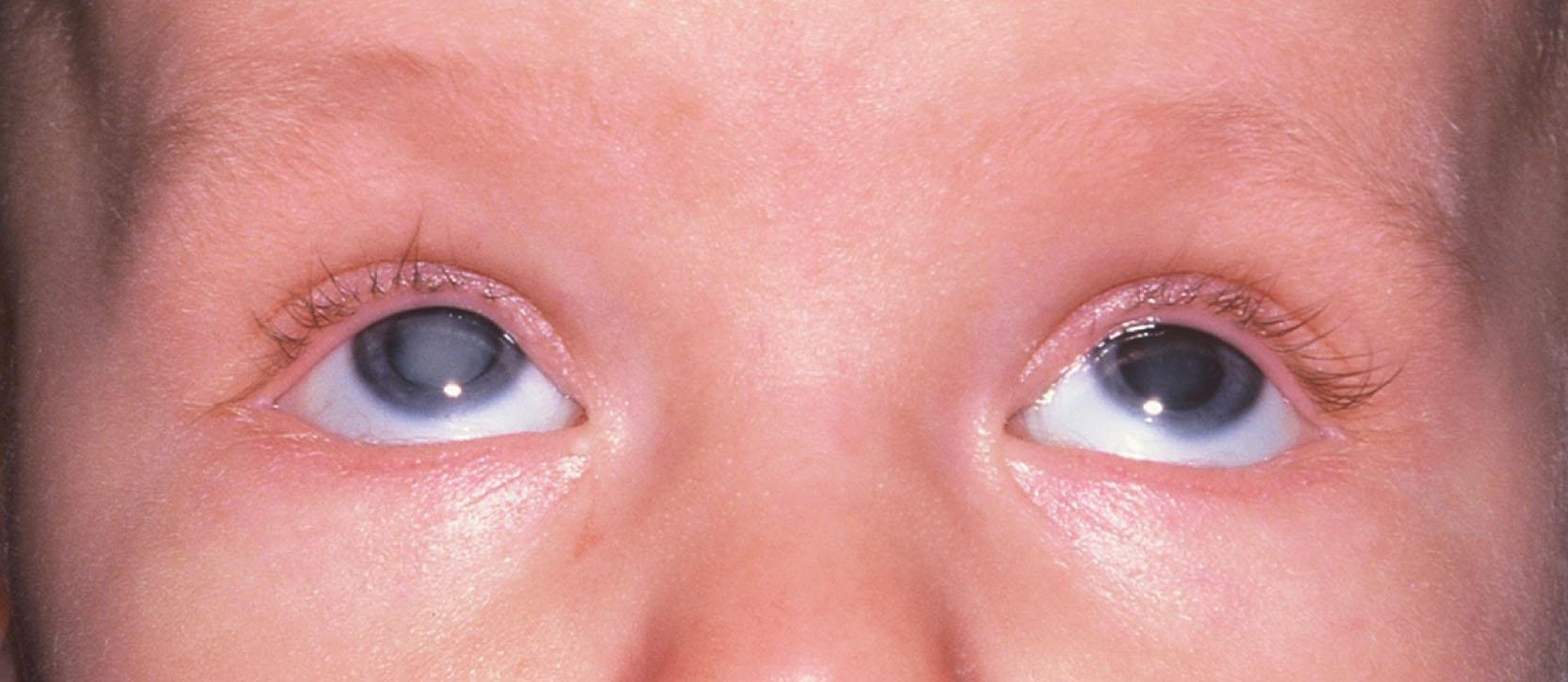
The morphology of cataracts offers important clues to their age of onset and visual prognosis. In addition, it provides insights into the etiology of a cataract. When possible, a slit-lamp examination is invaluable in identifying the morphology. Refinements in the morphology can be obtained intraoperatively. The morphology is largely determined by the timing and nature of the insult and the anatomy of the lens ( Box 35.1 ).
Anterior polar Central opacity on anterior capsule.
Nuclear Opaque lens material between anterior and posterior “Y” suture that may spread into the surrounding (especially posterior) cortex and often associated with posterior capsule plaque.
Lamellar Anterior and/or posterior cortical opacity not involving the nucleus.
Persistent fetal vasculature Combination of one or more of the following: retrolental membrane with or without visible vessels, patent or non-patent persistent hyaloid vessel, or stretched ciliary processes.
Posterior polar Opacity of the posterior capsule often with opacification of the adjacent cortex.
Posterior lentiglobus Posterior bowing of the posterior capsule with or without a pre-existing posterior capsule defect.
Total Entire lens is white.
Some types of cataracts have a better prognosis than others. For example, anterior polar ( Figs. 35.2–35.4 ), lamellar ( Fig. 35.5 ), and posterior lentiglobus ( Figs. 35.6 and 35.7 ) cataracts are associated with the best visual prognoses, whereas nuclear (see Fig. 35.1 ) and posterior polar ( Fig. 35.8 ) cataracts have poorer visual prognoses. Acquired cataracts generally have a more favorable visual prognosis than congenital cataracts ( Fig. 35.9 ).
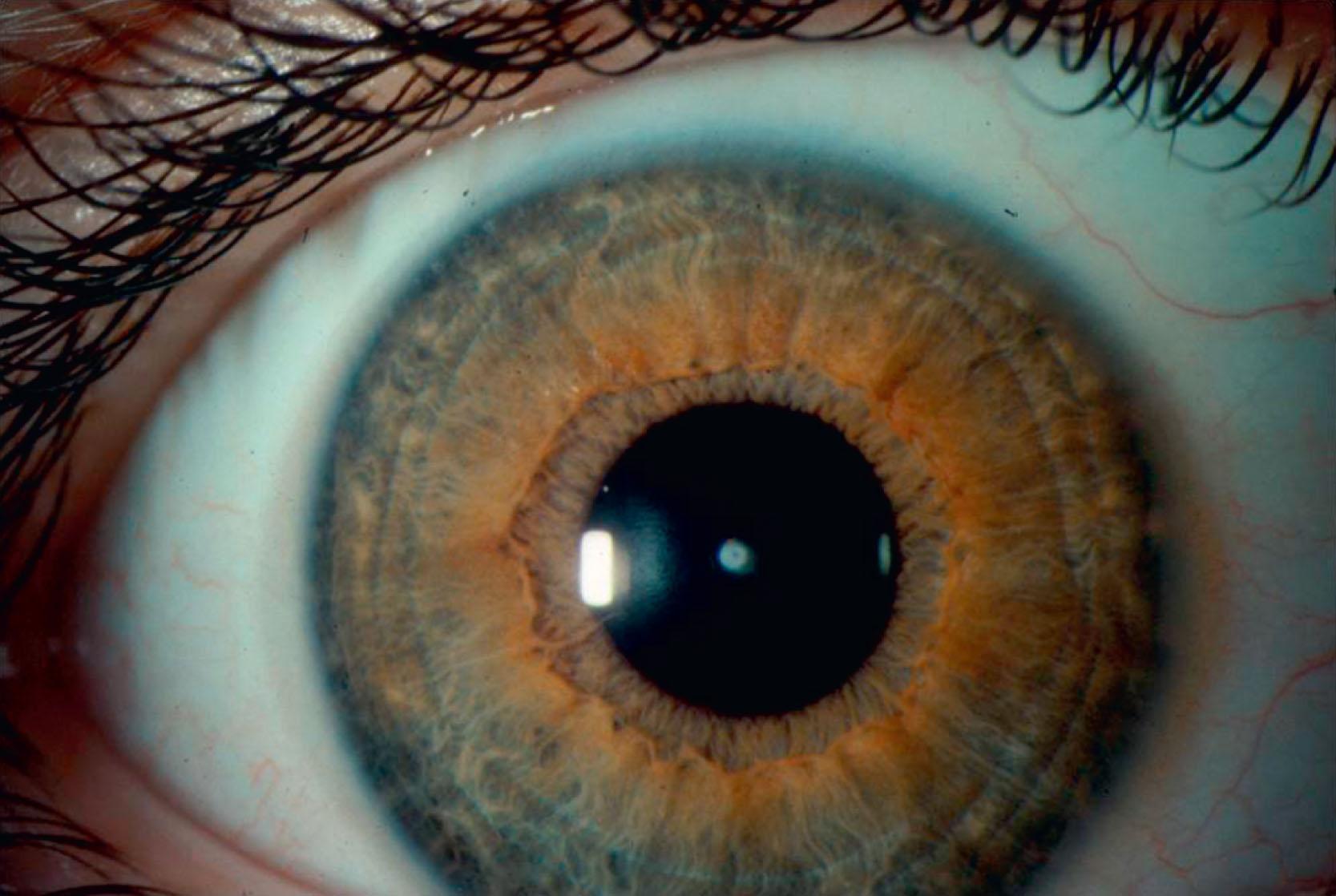
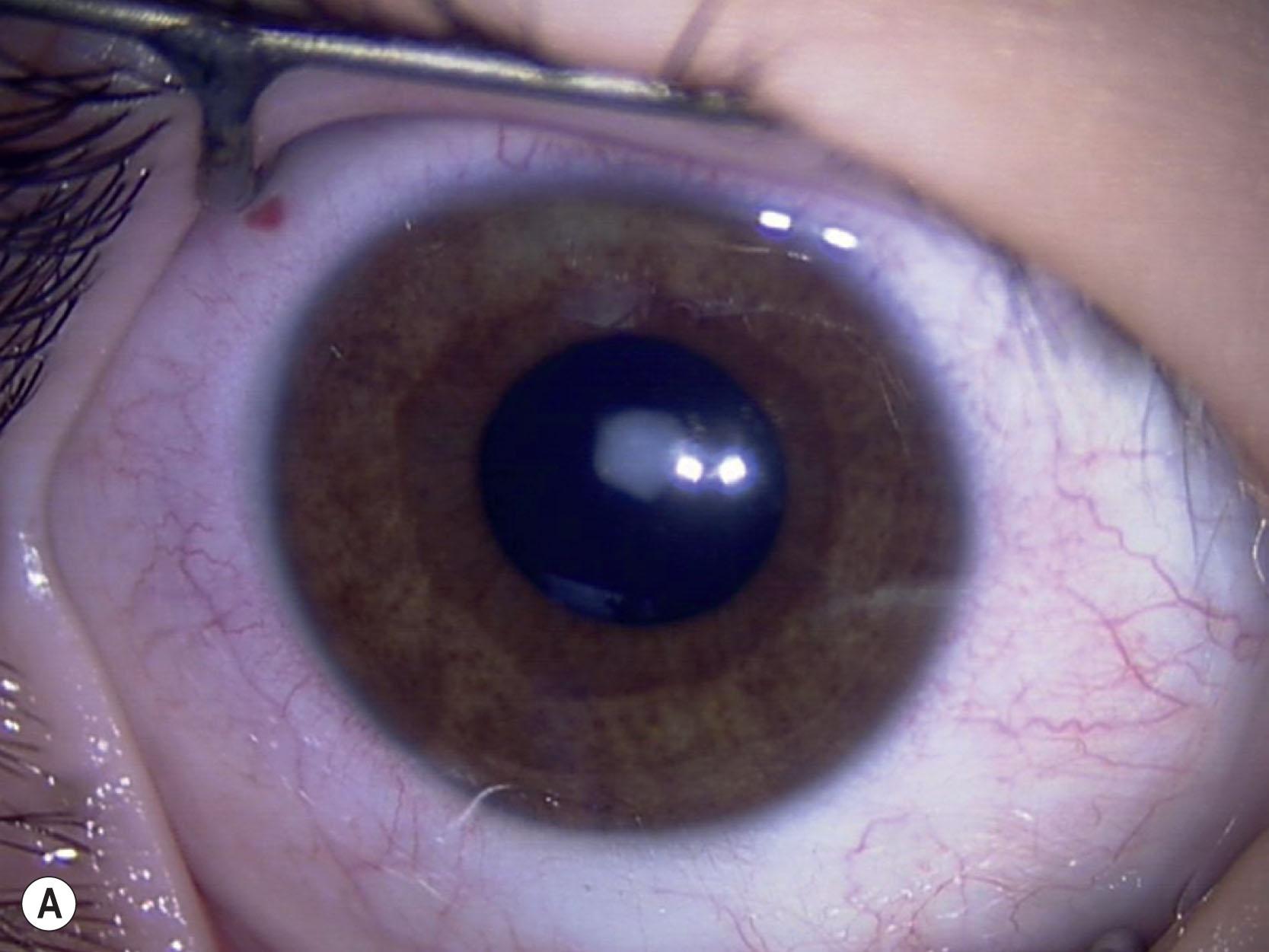
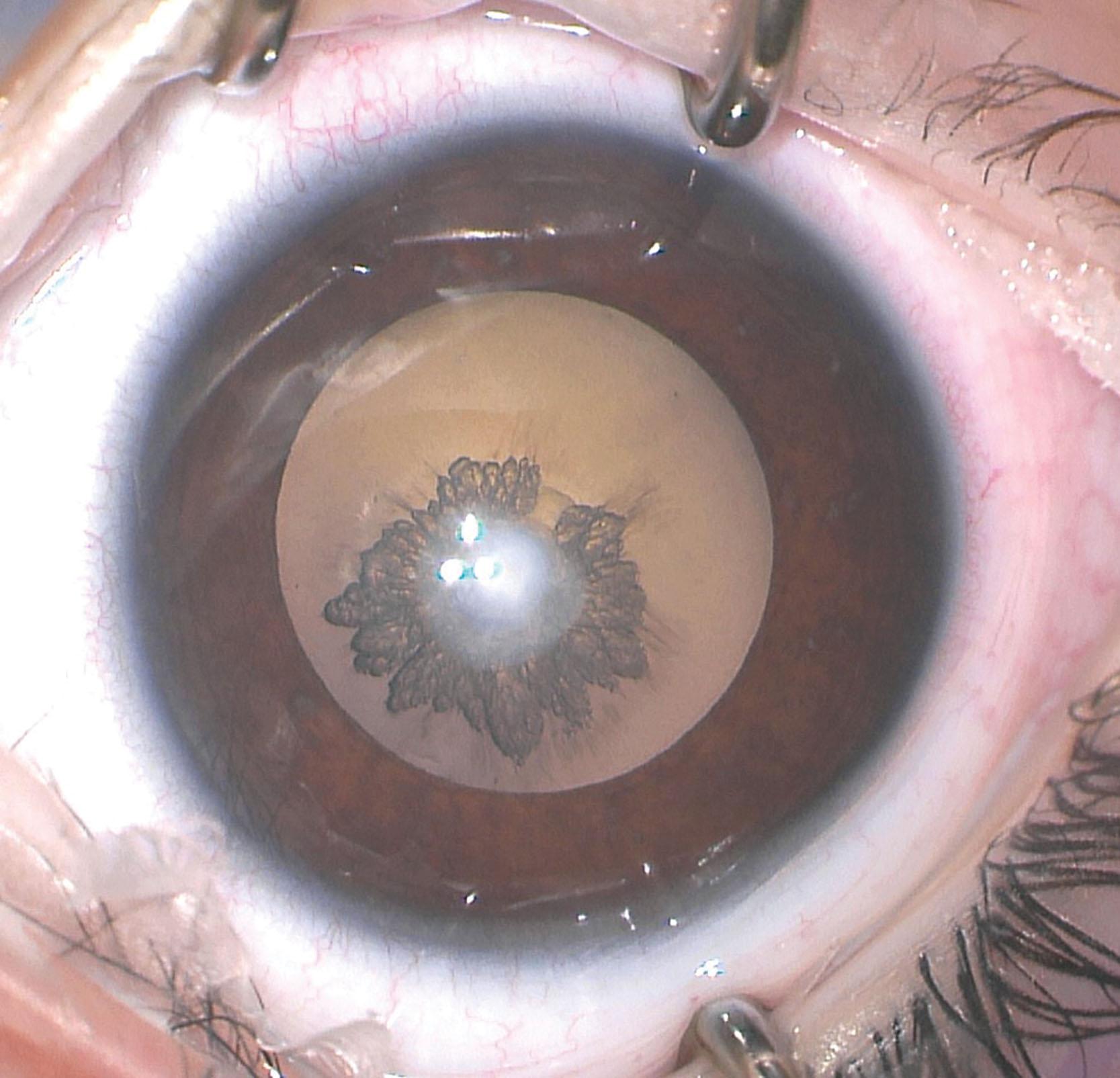
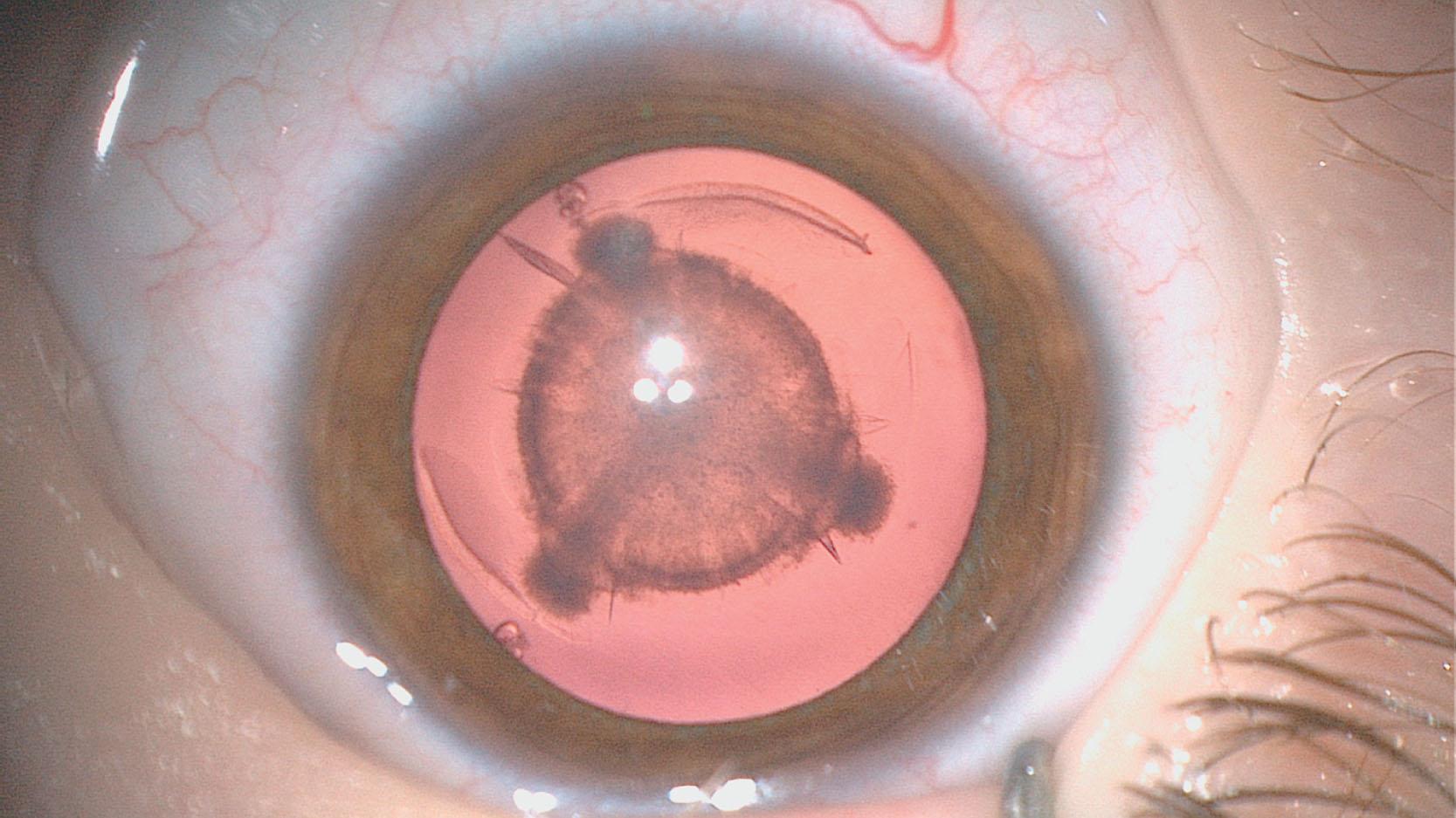
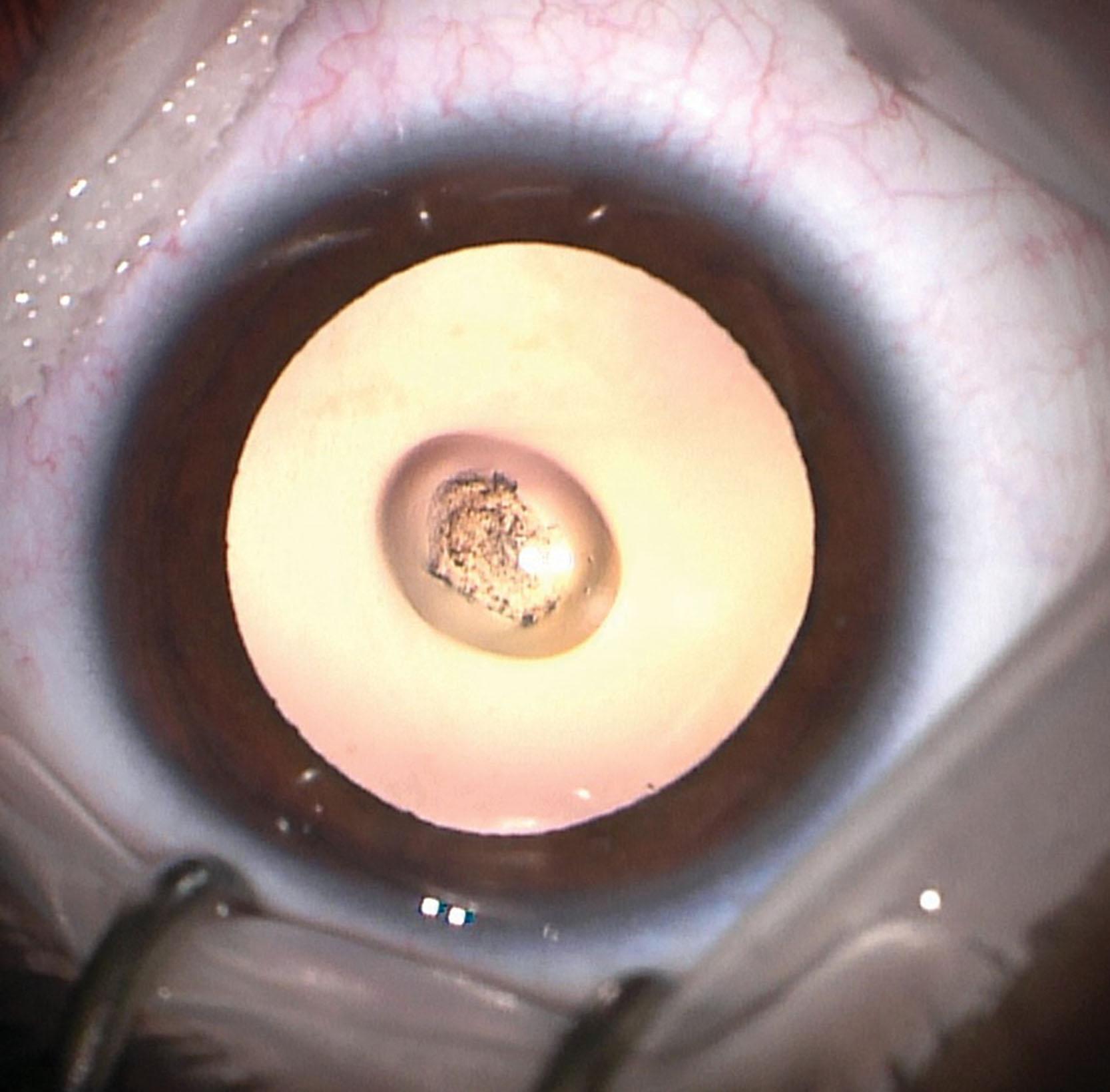
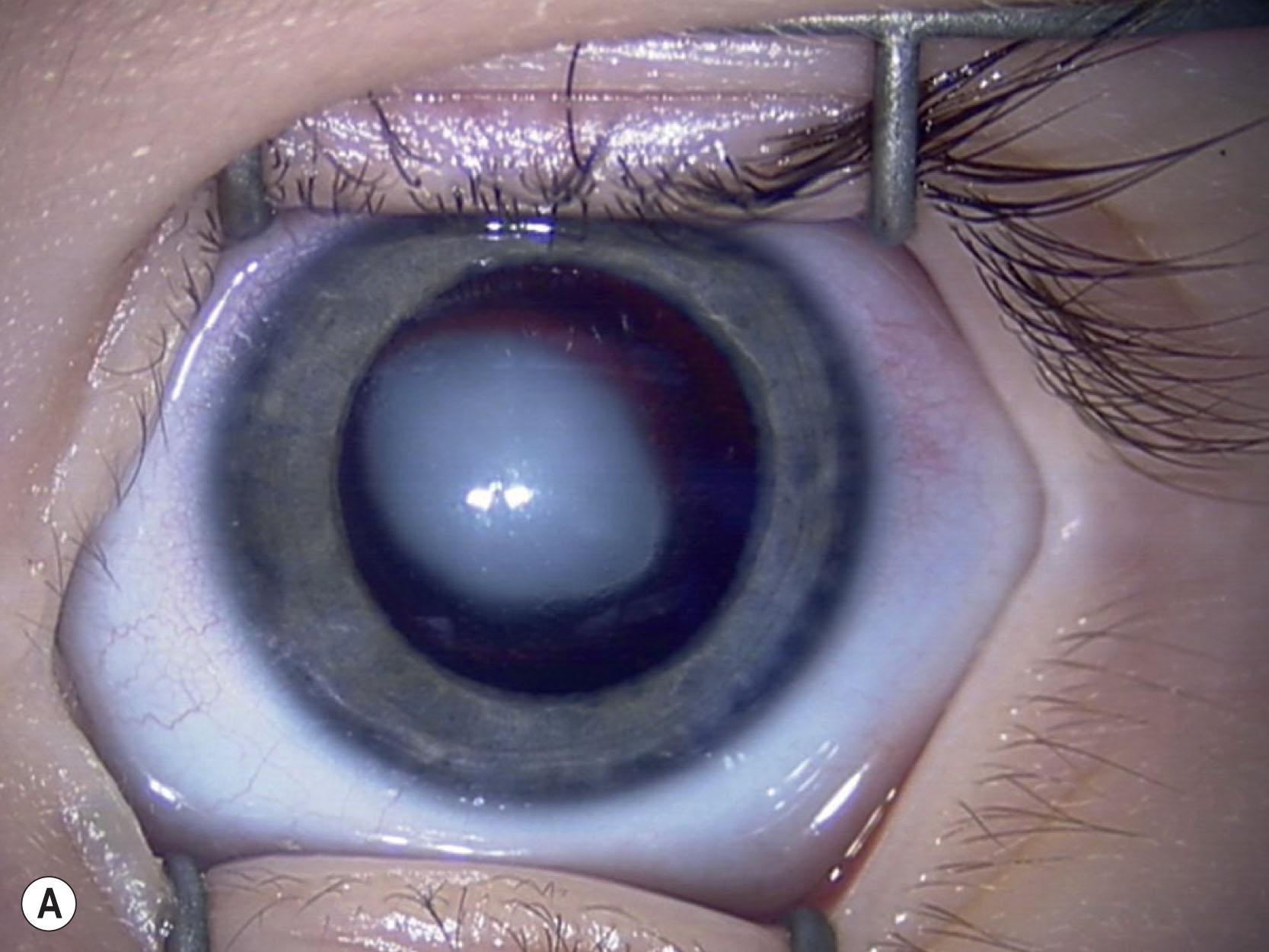
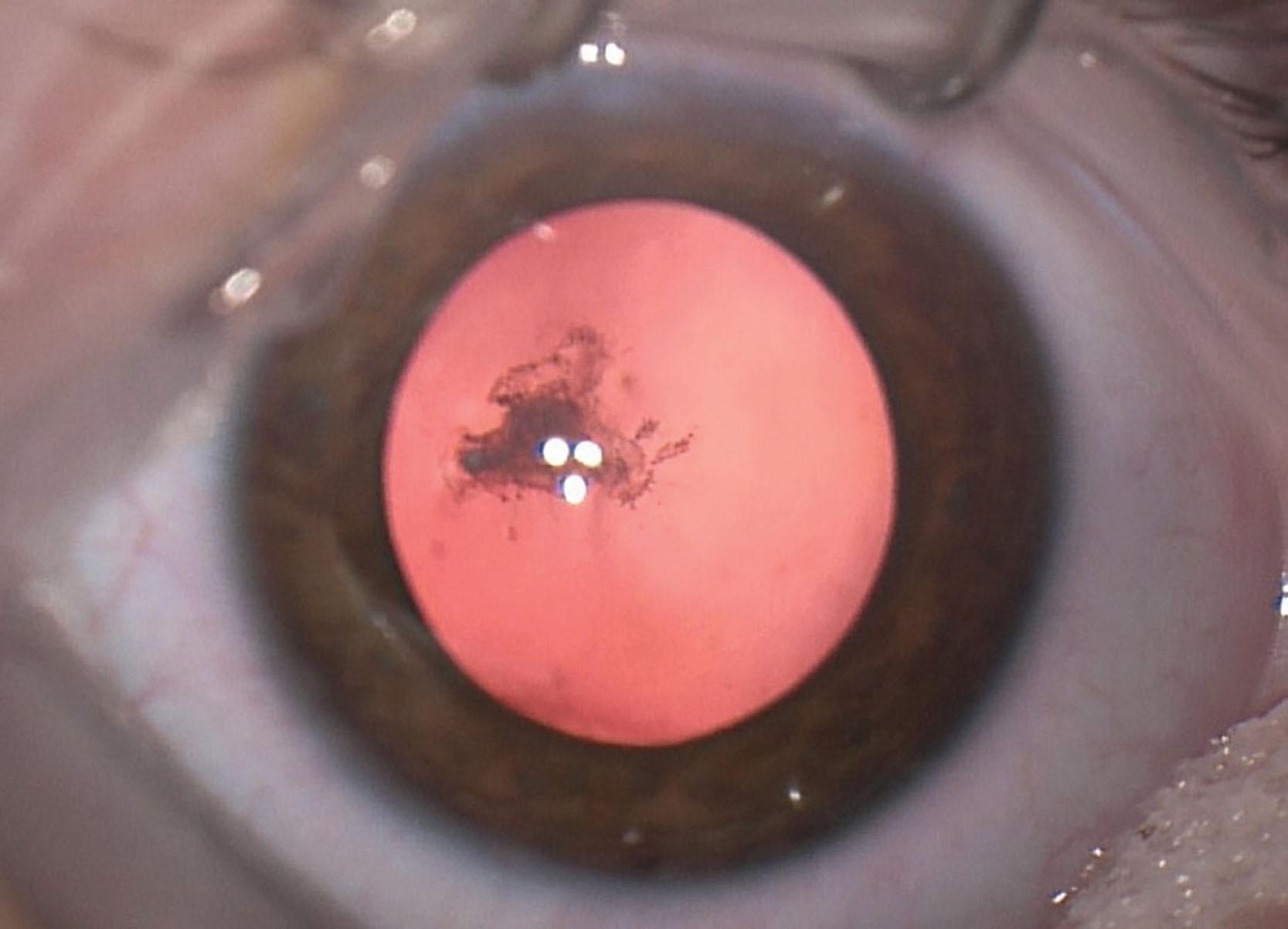
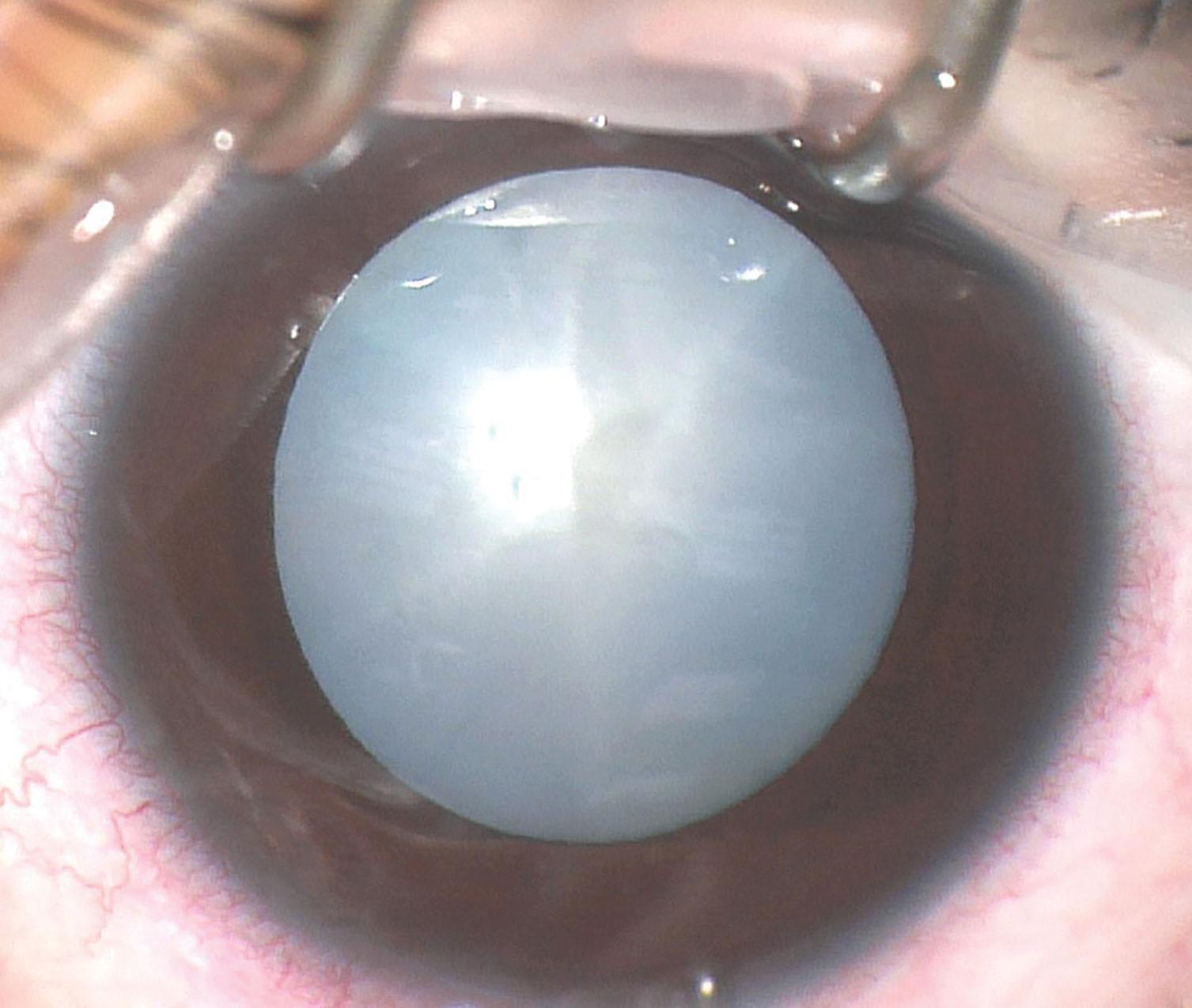
Certain types of cataracts are frequently associated with other ocular abnormalities. For example, nuclear cataracts are often associated with microphthalmos (see Fig. 35.1 ) while anterior polar cataracts (see Figs. 35.2–35.4 ) are more commonly associated with astigmatism. Partially reabsorbed (membranous) cataracts in an infant boy are suggestive of Lowe syndrome or Hallermann–Streiff–François syndrome ( Fig. 35.10 ). Wedge-shaped or sectional cataracts ( Fig. 35.11 ) may occur with Stickler syndrome and Conradi syndrome and may be due to Lyonization. Anterior lenticonus is suggestive of Alport syndrome whereas posterior subcapsular cataracts commonly occur with neurofibromatosis type II.
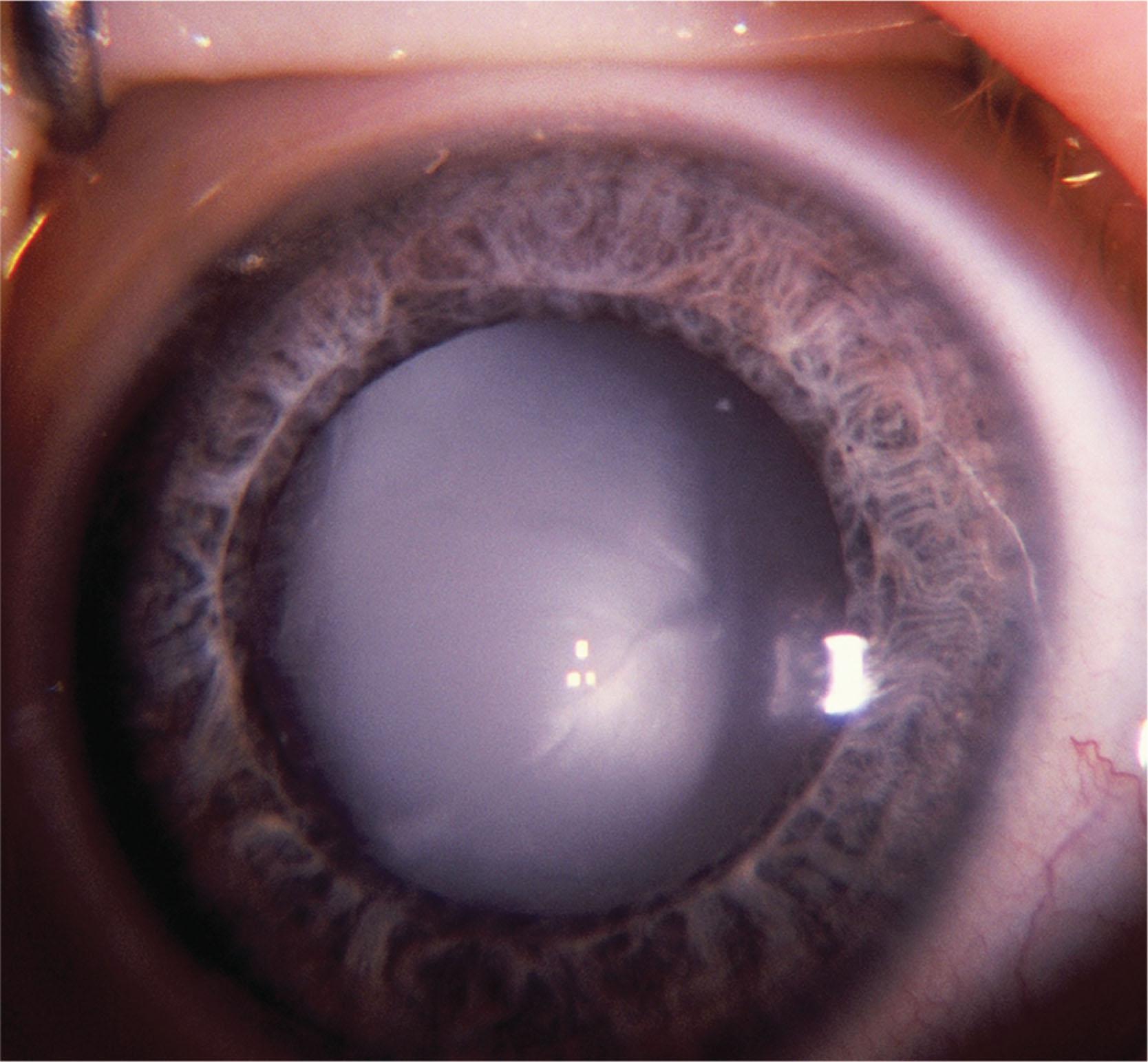
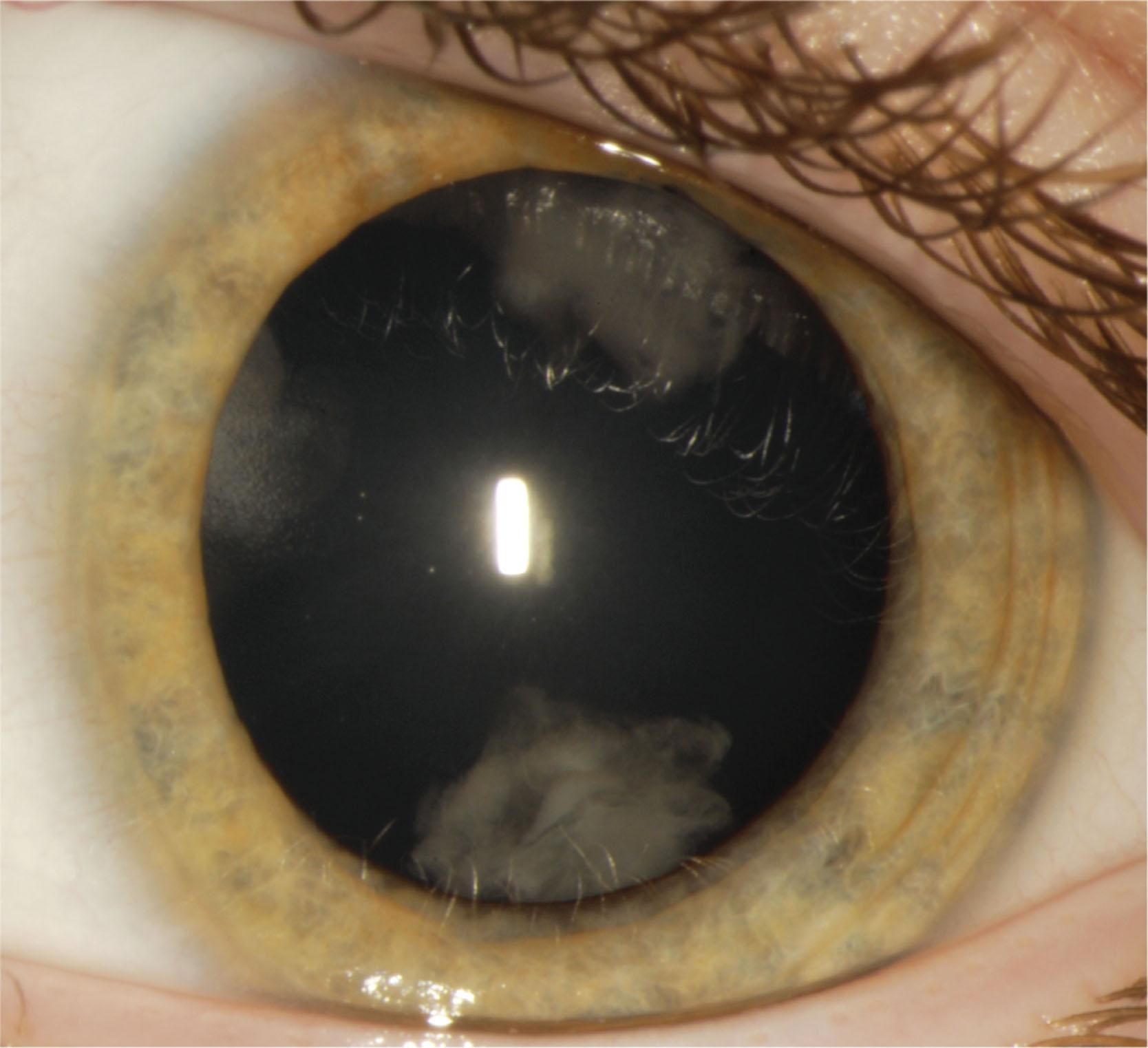
The term “persistent fetal vasculature” (PFV) describes a broad spectrum of ocular anomalies that may include a retrolental plaque ( Fig. 35.12 ) in a microphthalmic eye with prominent blood vessels on the iris and lens capsule, a shallow anterior chamber, and elongated ciliary processes ( ![]() ,
, ![]() ). Less commonly, these patients may present with a vascularized pupillary membrane, microcoria, and an anterior capsular cataract ( Fig. 35.13 ). PFV is almost always unilateral. Over time, the lens may undergo spontaneous absorption or become swollen with loss of the anterior chamber and glaucoma. Usually the posterior pole is normal, but fibrous tissue from the hyaloid remnants may contract, causing peripapillary distortion or tractional retinal detachment. In some cases, the retrolental plaque may be adherent to the peripheral retina and a retinotomy may be required to extricate the retina from the retrolental plaque.
). Less commonly, these patients may present with a vascularized pupillary membrane, microcoria, and an anterior capsular cataract ( Fig. 35.13 ). PFV is almost always unilateral. Over time, the lens may undergo spontaneous absorption or become swollen with loss of the anterior chamber and glaucoma. Usually the posterior pole is normal, but fibrous tissue from the hyaloid remnants may contract, causing peripapillary distortion or tractional retinal detachment. In some cases, the retrolental plaque may be adherent to the peripheral retina and a retinotomy may be required to extricate the retina from the retrolental plaque.
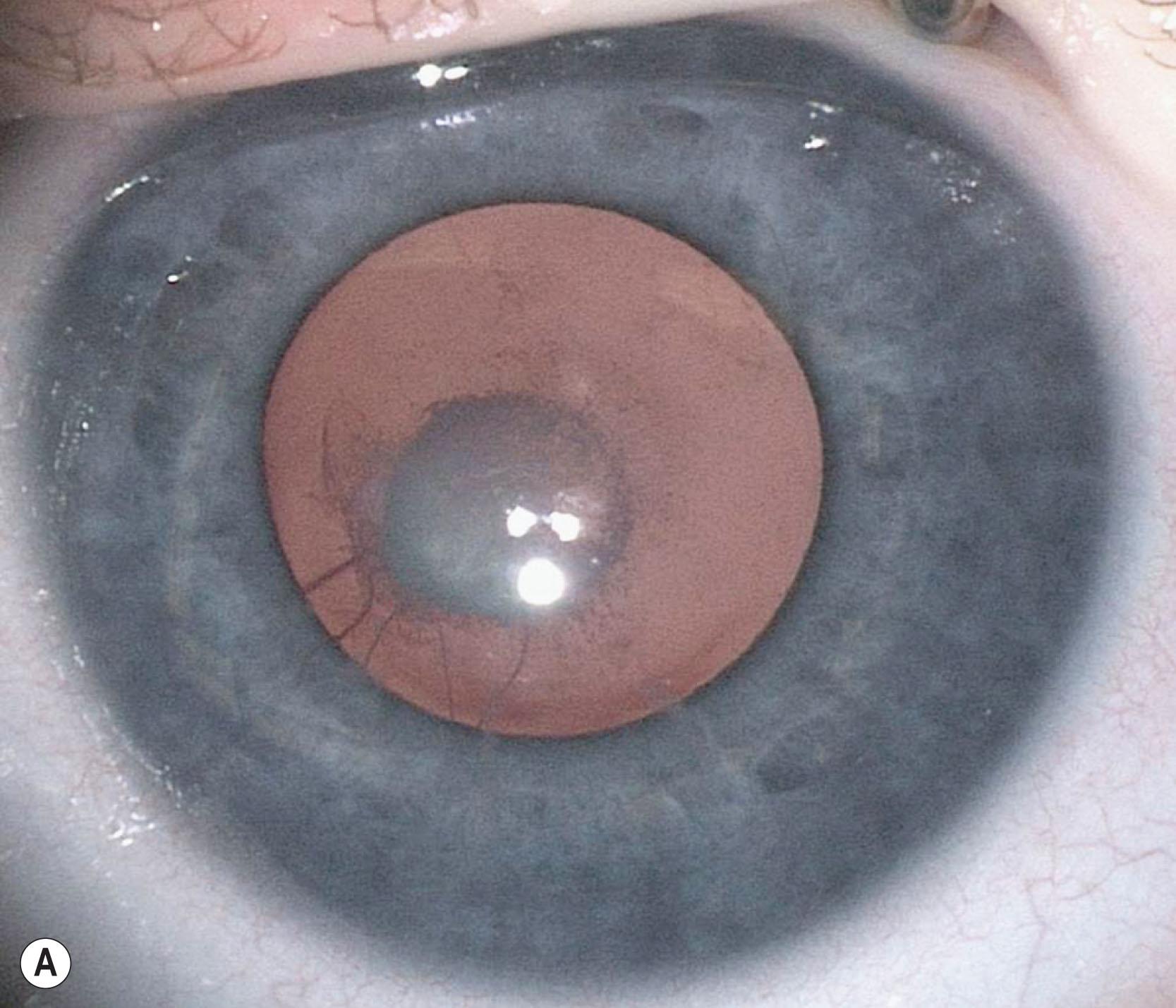
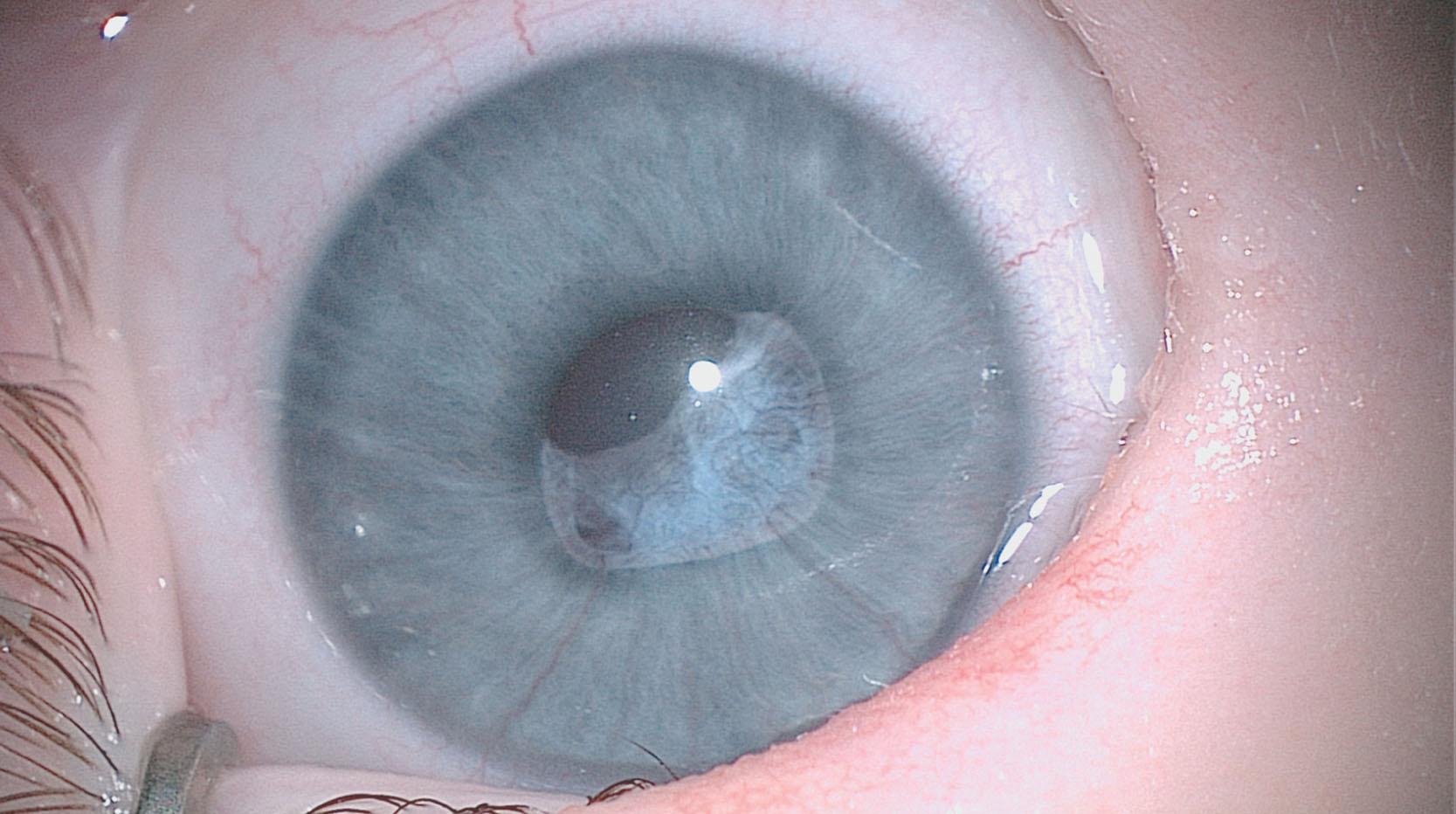
An etiology can be established in about 70% of children with bilateral congenital cataracts. The most common etiology in Europe and the United States are mutations in genes for lens proteins. Less frequently, cataracts can be associated with aniridia ( Fig. 35.14 ), trisomy 21 ( Figs. 35.15 and 35.16 ), Lowe syndrome ( Fig. 35.17 ), Hallermann–Streiff–François syndrome (see Fig. 35.10 and Fig. 35.18 ), or a variety of other ocular disorders and syndromes ( Box 35.2 ). Congenital rubella syndrome is a common cause of cataracts where rubella immunization rates are low.
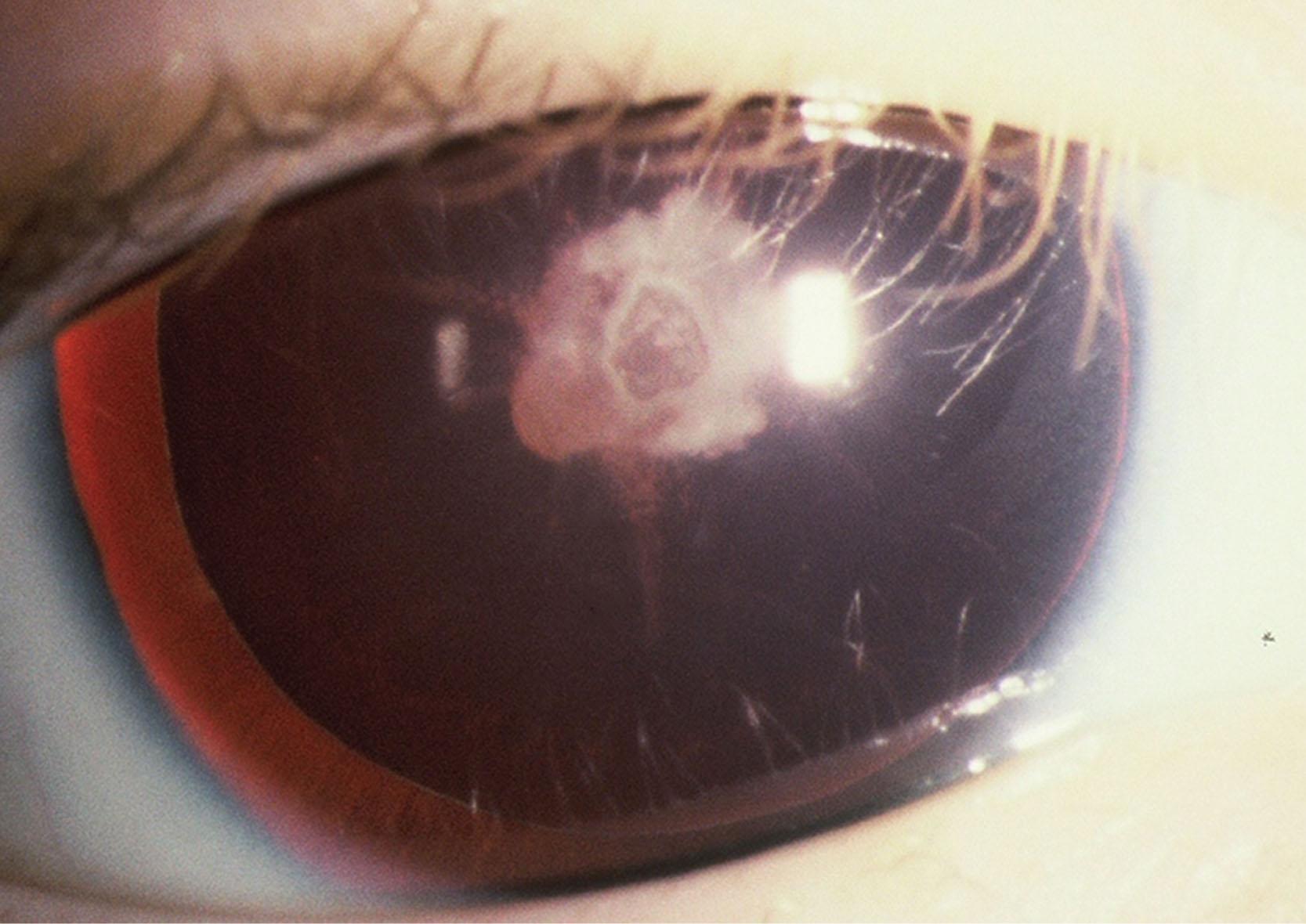
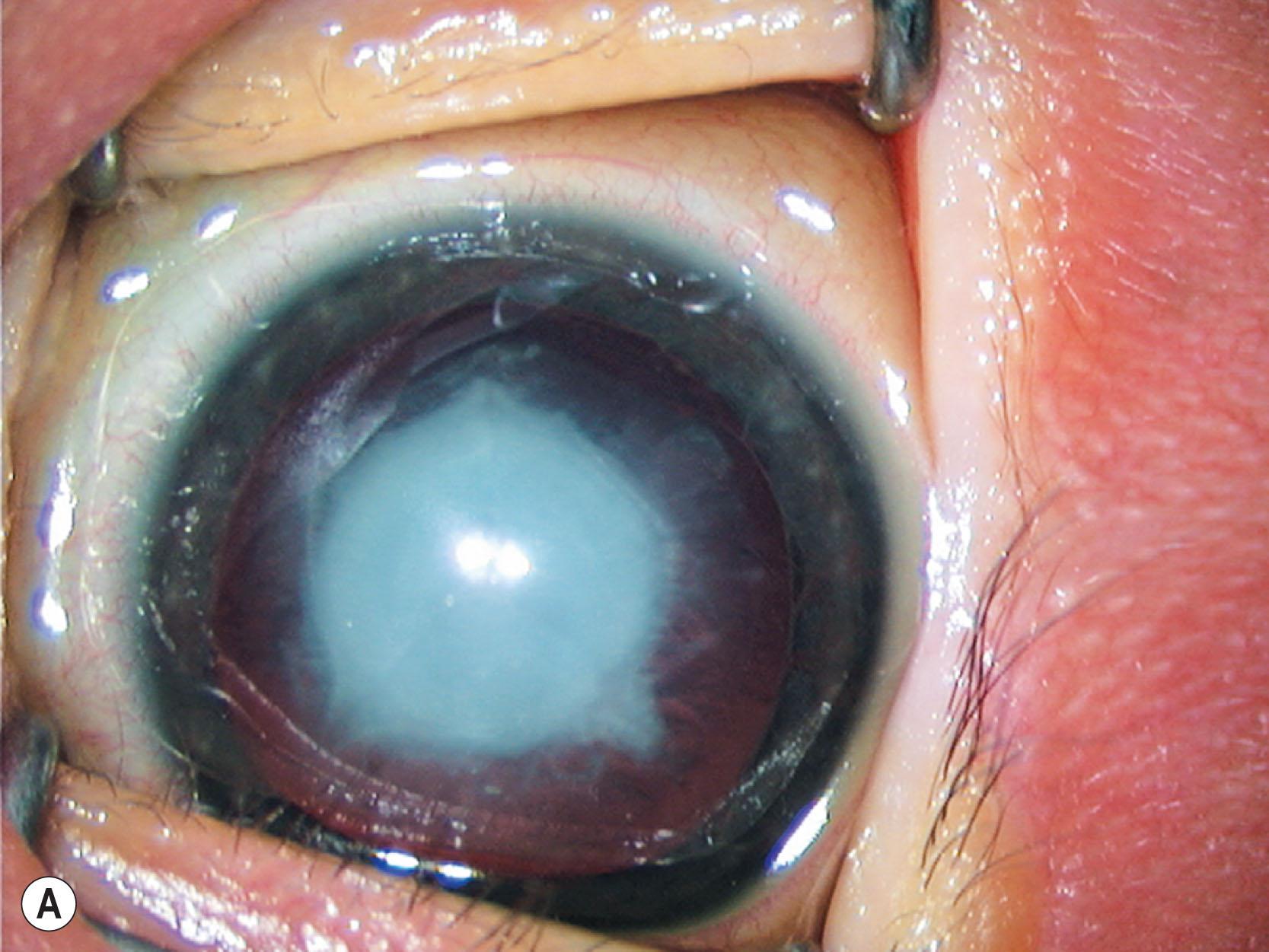
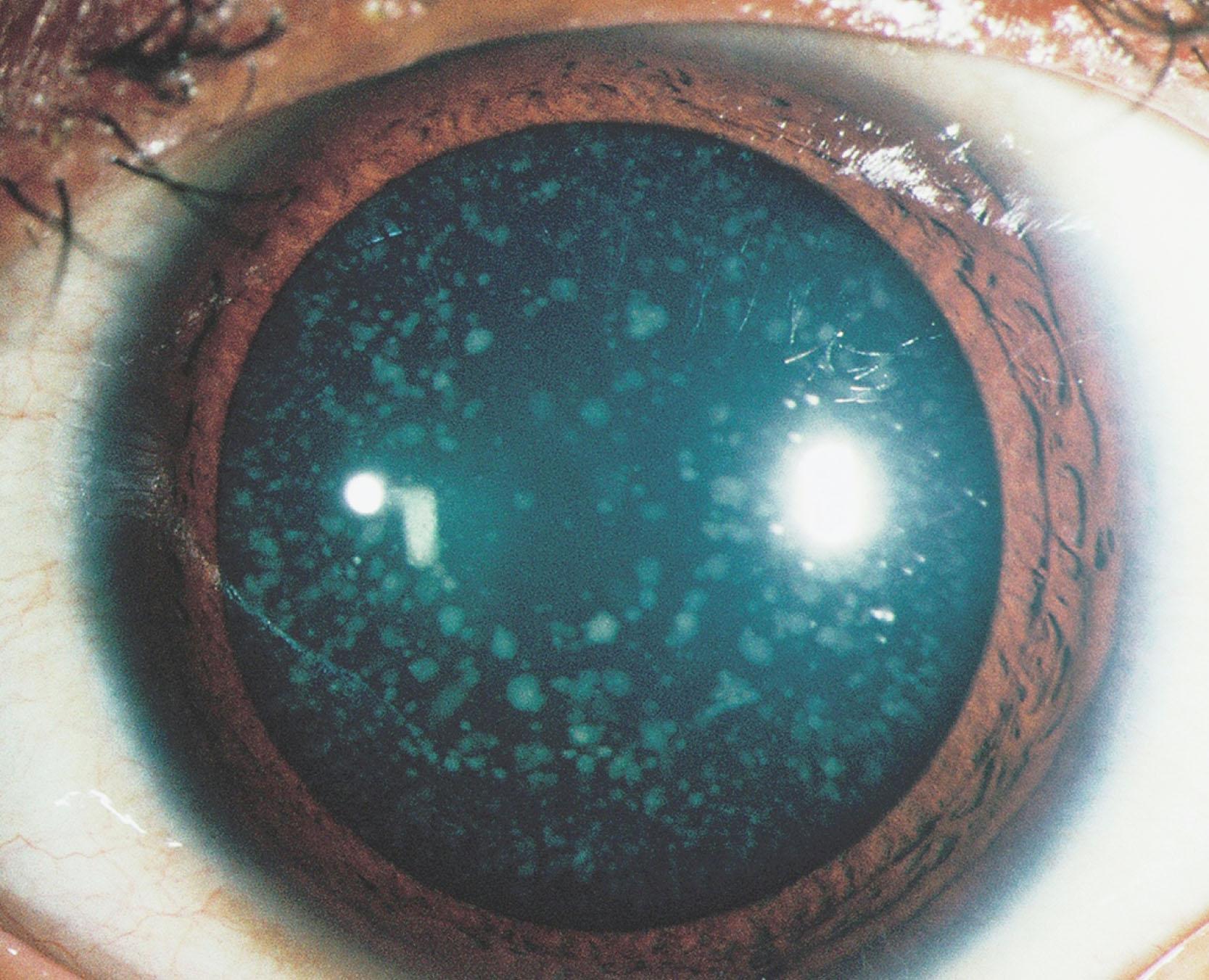
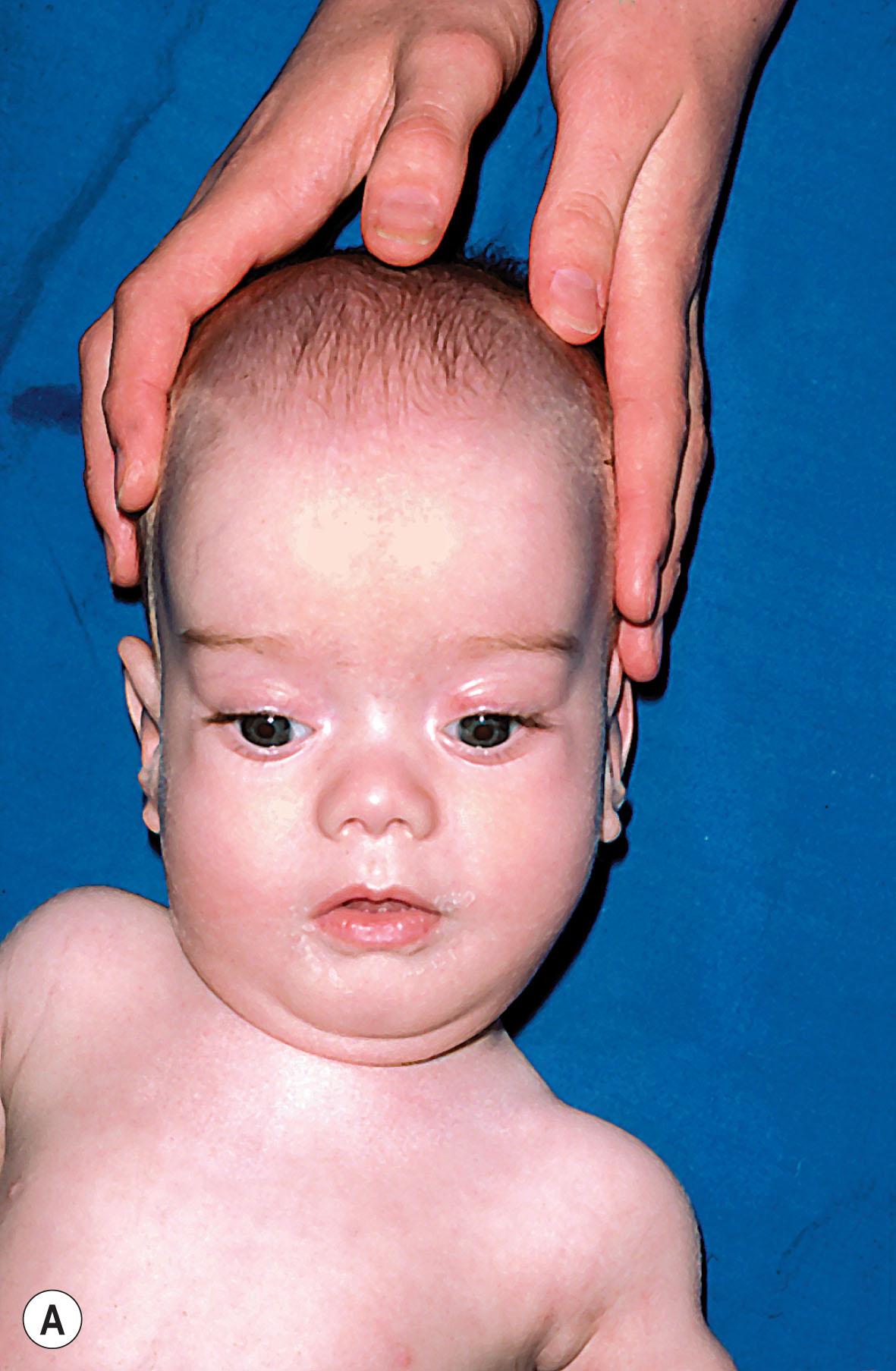
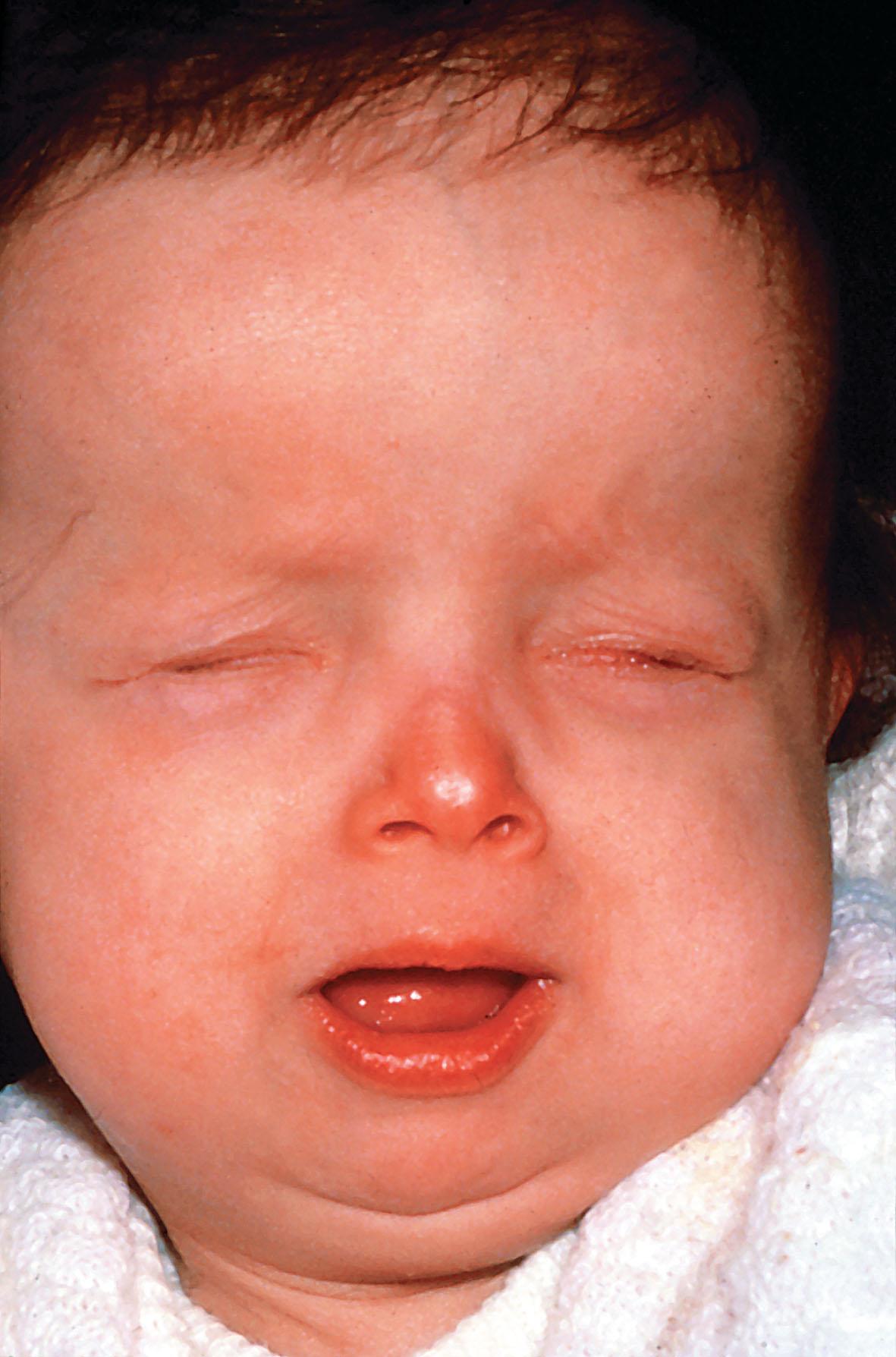
Trisomy 21
Turner syndrome
Trisomy 13
Trisomy 18
Cri du chat syndrome
Cerebro-oculofacial skeletal syndrome
Lowe syndrome
Alport syndrome
Hallermann–Streiff–François syndrome
Corticosteroids
Chlorpromazine
Autosomal dominant
Autosomal recessive
X-linked
Crystalline cataract and uncombable hair
Cockayne syndrome
Rothmund–Thomson syndrome
Atopic dermatitis
Incontinentia pigmenti
Congenital ichthyosis
Ectodermal dysplasia
Werner syndrome
Myotonic dystrophy
Zellweger syndrome
Meckel–Gruber syndrome
Marinesco–Sjögren syndrome
Infantile neuronal ceroid-lipofuscinosis
Smith–Lemli–Opitz syndrome
Conradi syndrome
Weill–Marchesani syndrome
Stickler syndrome
Bardet–Biedl syndrome
Rubinstein–Taybi syndrome
Noonan syndrome
Rubella
Varicella
Toxoplasmosis
Herpes simplex
Toxocara canis
Become a Clinical Tree membership for Full access and enjoy Unlimited articles
If you are a member. Log in here